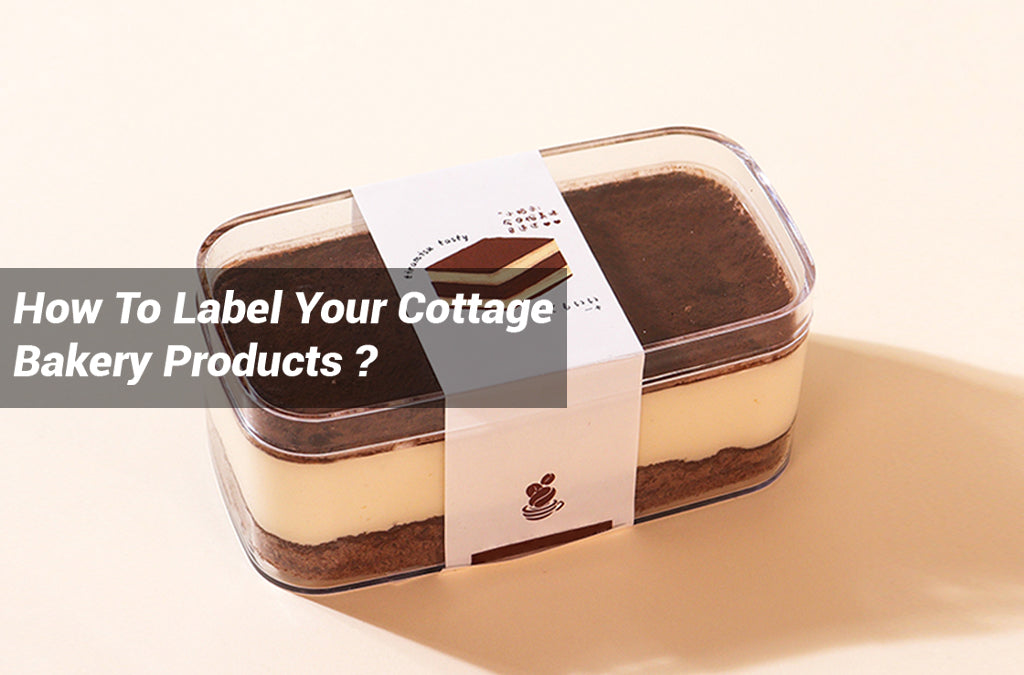

Removable Film Labels
Written by: BernauLena
|
|
Time to read 7 min
If you’re planning to make and sell baked goods from home, having a professional baking label can boost your brand image and make customers trust your products more. Designing a label that looks nice and is easy to use may seem hard, but it only takes a few simple steps. This guide will show you 5 easy steps to help you create baking labels that look professional and work well.
Table of Content
To create a great label, you need a design tool. For small baking businesses, Canva is a fantastic choice. It’s a powerful online tool with lots of templates to help you get started easily.
Canva’s big advantage is its customization options. You can adjust the size, colors, fonts, and shapes to fit your needs and make unique labels. Even if you’ve never designed anything before, Canva’s simple interface and rich template library can help you quickly create labels that match your brand style and make your products stand out.
Label Size
The size and shape of your label should match your packaging. It needs to look good and be practical. Different baked goods may need different label sizes. For example:
· Small cakes or mini desserts work well with smaller, simple labels.
· Larger packages or those needing more product info might require bigger labels.
Label Shape
Likewise, the shape of the label should suit the product. Long, thin labels may work best for mini cakes, while round labels can be better for cookies. However, there’s no strict rule—you can always get creative and choose what suits your product best.
The fonts on your label are very important, especially for showing product details. Fonts should be simple and clear so customers can quickly read the product name, ingredients, expiration date, and other key details. Avoid overly fancy fonts that might be hard to read.
Also, don’t use fonts that are too light or thin, as they might make reading difficult.
A good tip is to use two different font sizes on the label:
· A larger one for the product name.
· A smaller one for details like ingredients .
This makes the label easier to read and more visually appealing.
As with any new product, there’s always room to grow. Here’s what this user had to say:
Add a Label Holder
Currently, the ILabel Printer doesn’t come with a label holder, which some users find inconvenient. Betckey has received this feedback and is already working on incorporating this feature in the near future. Stay tuned!
Minor Setup Adjustments
Like most new devices, the ILabel Printer might take a little getting used to. For example, some users reported minor alignment issues during the first few prints. Betckey recommends running 3-5 test labels to ensure everything is set up correctly before diving into bulk printing. Once the initial setup is done, you can expect smooth and fast performance.
Colors play a big role in how your label looks. When picking colors, focus on matching your brand’s style. If you already have brand colors, use them on your label to make your brand easy to recognize.
Most importantly, make sure there’s enough contrast between the text and the background. High-contrast colors help customers read the information clearly. For example, use light-colored text on a dark background or dark text on a light background. Avoid low-contrast combinations, like light gray text on a pale blue background, as these can be hard to read.
Organizing Information
Each state has different rules for cottage food products, so make sure to check the requirements in your area and include all the necessary information on your label.
Common details to include are:
· Product name
· Information about your home kitchen
· Allergy warnings
· Ingredients (partly or fully listed, depending on state law)
· Cottage food statements......
Carefully adjust the font size, spacing, and alignment to make sure the label looks tidy and easy to read. Keep tweaking the layout until it looks its best.
Using Images
While keeping the information clear, you can also add some decorative elements, like borders, logos, or product photos, to make the label more attractive. If you want to reach more people, consider adding a QR code, your store’s social media accounts, or other ways for customers to connect with you. This can help you build loyal followers over time.
With these 5 simple steps, you can easily design baking labels that are both professional and efficient. From listing ingredients to allergy warnings and creating beautiful designs, a professional label leaves a strong impression on customers and builds trust. Use the right tools, sizes, shapes, fonts, colors, and layouts to make your baked goods stand out and attract more buyers. Let your brand shine in the market!
Alabama
Click here to learn about cottage food laws in Alabama.
Alaska
Click here to learn about cottage food laws in Alaska.
Arizona
Click here to learn about cottage food laws in Arizona.
Arkansas
Click here to learn about cottage food laws in Arkansas.
California
Click here to learn about cottage food laws in California.
Colorado
Click here to learn about cottage food laws in Colorado.
Connecticut
Click here to learn about cottage food laws in Connecticut.
Delaware
Click here to learn about cottage food laws in Delaware.
Florida
Click here to learn about cottage food laws in Florida.
Georgia
Click here to learn about cottage food laws in Georgia.
Hawaii
Click here to learn about cottage food laws in Hawaii.
Idaho
Click here to learn about cottage food laws in Idaho.
Illinois
Click here to learn about cottage food laws in Illinois.
Indiana
Click here to learn about cottage food laws in Indiana.
Iowa
Click here to learn about cottage food laws in Iowa.
Kansas
Click here to learn about cottage food laws in Kansas.
Kentucky
Click here to learn about cottage food laws in Kentucky.
Louisiana
Click here to learn about cottage food laws in Louisiana.
Maine
Click here to learn about cottage food laws in Maine.
Maryland
Click here to learn about cottage food laws in Maryland.
Massachusetts
Click here to learn about cottage food laws in Massachusetts.
Michigan
Click here to learn about cottage food laws in Michigan.
Minnesota
Click here to learn about cottage food laws in Minnesota.
Mississippi
Click here to learn about cottage food laws in Mississippi.
Missouri
Click here to learn about cottage food laws in Missouri.
Montana
Click here to learn about cottage food laws in Montana.
Nebraska
Click here to learn about cottage food laws in Nebraska.
Nevada
Click here to learn about cottage food laws in Nevada.
New Hampshire
Click here to learn about cottage food laws in New Hampshire.
New Jersey
Click here to learn about cottage food laws in New Jersey.
New Mexico
Click here to learn about cottage food laws in New Mexico.
New York
Click here to learn about cottage food laws in New York.
North Carolina
Click here to learn about cottage food laws in North Carolina.
North Dakota
Click here to learn about cottage food laws in North Dakota.
Ohio
Click here to learn about cottage food laws in Ohio.
Oklahoma
Click here to learn about cottage food laws in Oklahoma.
Oregon
Click here to learn about cottage food laws in Oregon.
Pennsylvania
Click here to learn about cottage food laws in Pennsylvania.
Rhode Island
Click here to learn about cottage food laws in Rhode Island.
South Carolina
Click here to learn about cottage food laws in South Carolina.
South Dakota
Click here to learn about cottage food laws in South Dakota.
Tennessee
Click here to learn about cottage food laws in Tennessee.
Texas
Click here to learn about cottage food laws in Texas.
Utah
Click here to learn about cottage foods label requirements in Utah.
Vermont
Click here to learn about cottage foods label requirements in Vermont.
Virginia
Click here to learn about cottage foods label requirements in Virginia.
Washington
Click here to learn about cottage foods label requirements in Washington.
West Virginia
Click here to learn about cottage foods label requirements in West Virginia.
Wisconsin
Click here to learn about cottage foods label requirements in Wisconsin.
Wyoming
Click here to learn about cottage foods label requirements in Wyoming.
About Betckey
Betckey Premium Labels is a leading supplier of compatible direct thermal labels, committed to high-quality and eco-friendly products as well as competitive pricing. We offer better products than manufactured original at 70% less price. Now, our Amazon store ranks first in the US, Canada, and Western Europe with thousands of positive ratings. Visit betckey.com and get 10% off purchases over $150 with code Betckey10 and 15% off over $400 with code Betckey15! Sign up now and we'll send you a $5 discount code towards your first purchase. By the way, welcome to follow our official @ Tik Tok and @ Youtube accounts to get Betckey’s latest news!
If you want to buy thermal labels or sticker paper, you can check out more on our store

24/7 support team

Multiple Payment Methods

Worry-free shopping

Delivery in 3-7 business days
Be the first to know about label discounts,
product launches, and time-saving tips — subscribe now!
Are you 18 years old or older?
Sorry, the content of this store can't be seen by a younger audience. Come back when you're older.
They are exactly what I need, very easy to use!!!
Everithing was really good, fast delivery, product quality 100% guarantee
Very versatile label for mailing addresses and a marketing to promote a product or get someone’s attention.
Brother DK-2205 Compatible Continuous Labels 2.4" x 100'
Great little labels to use in pricing jewelry. Saves a lot time when you use with a thermal printer. I use on the hang tags and other display cards. Will definitely reorder in the future.
The label is perfect it's very recommended to everyone
iLabel 4x6 Thermal Shipping Label Printer Bluetooth Wireless
Dymo 30256 Removable Film Waterproof Shipping Labels 2-5/16” x 4”






